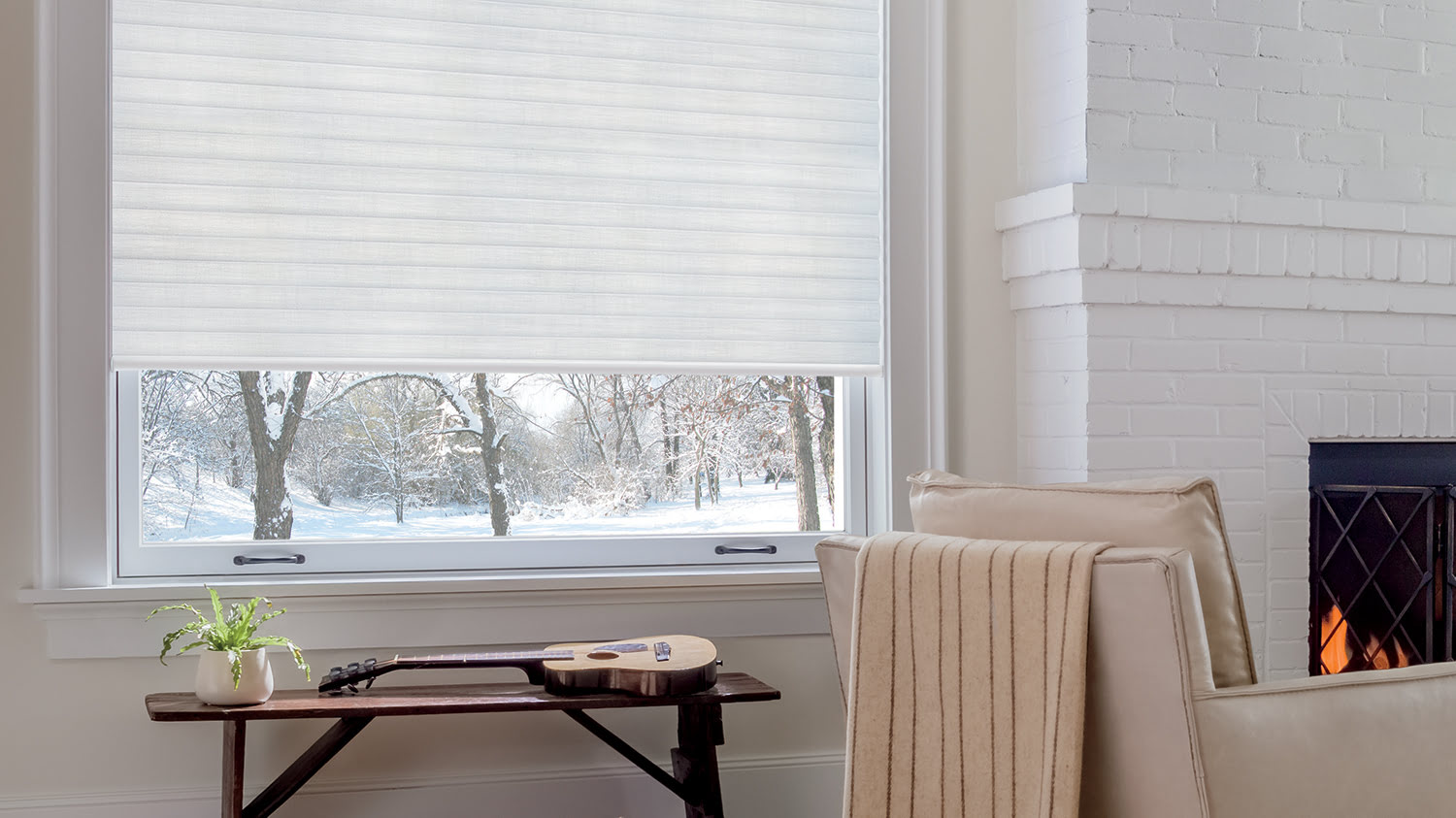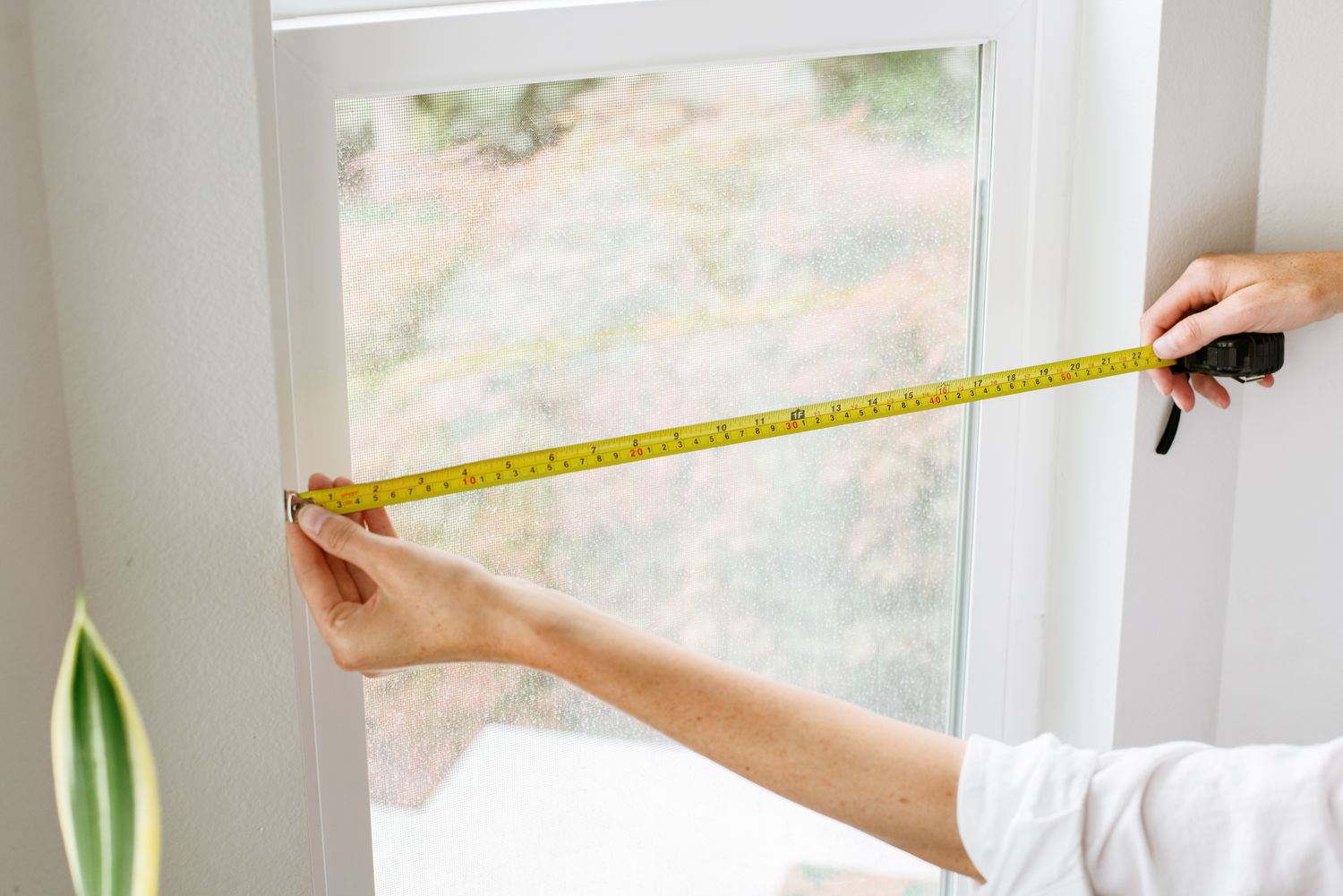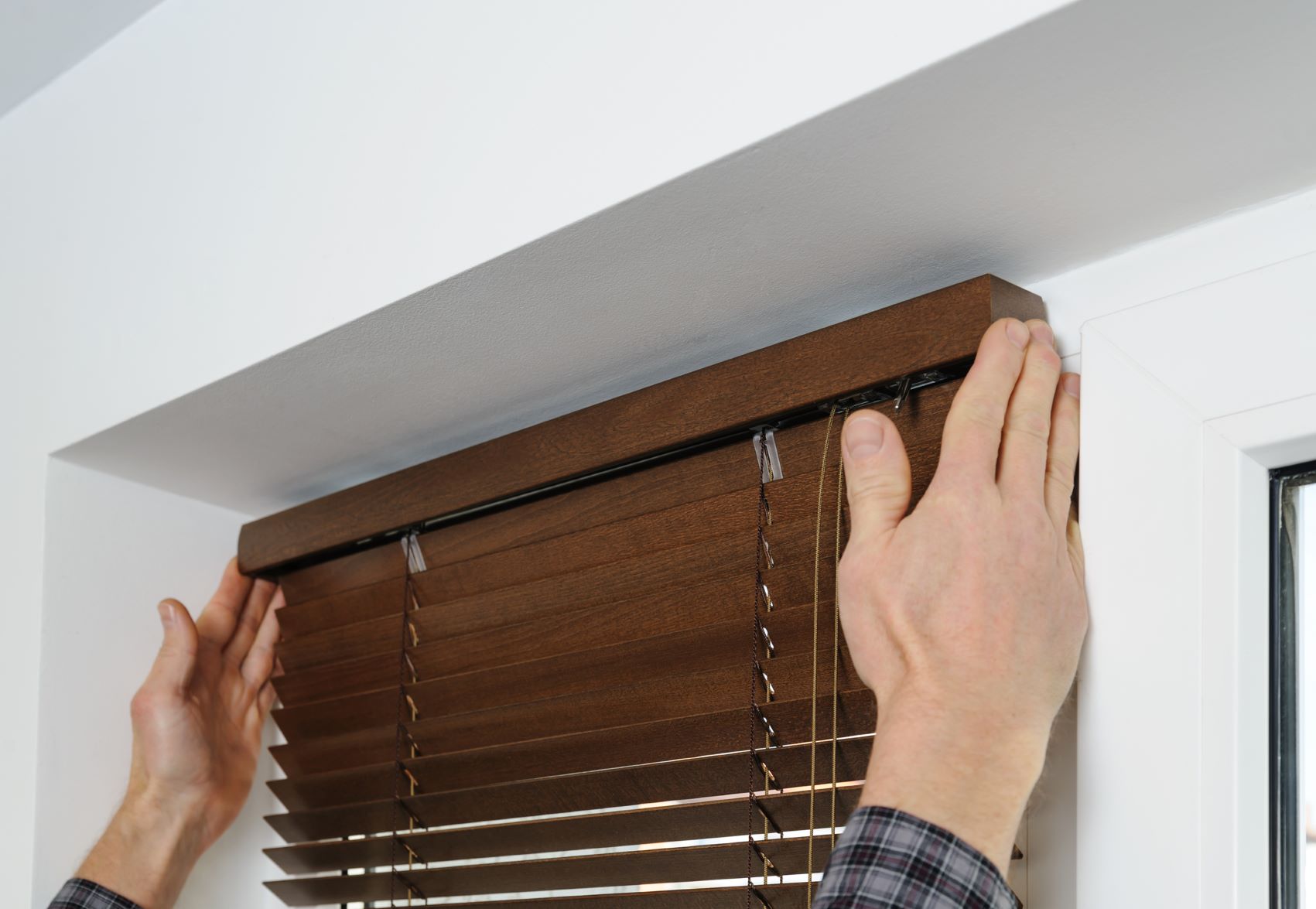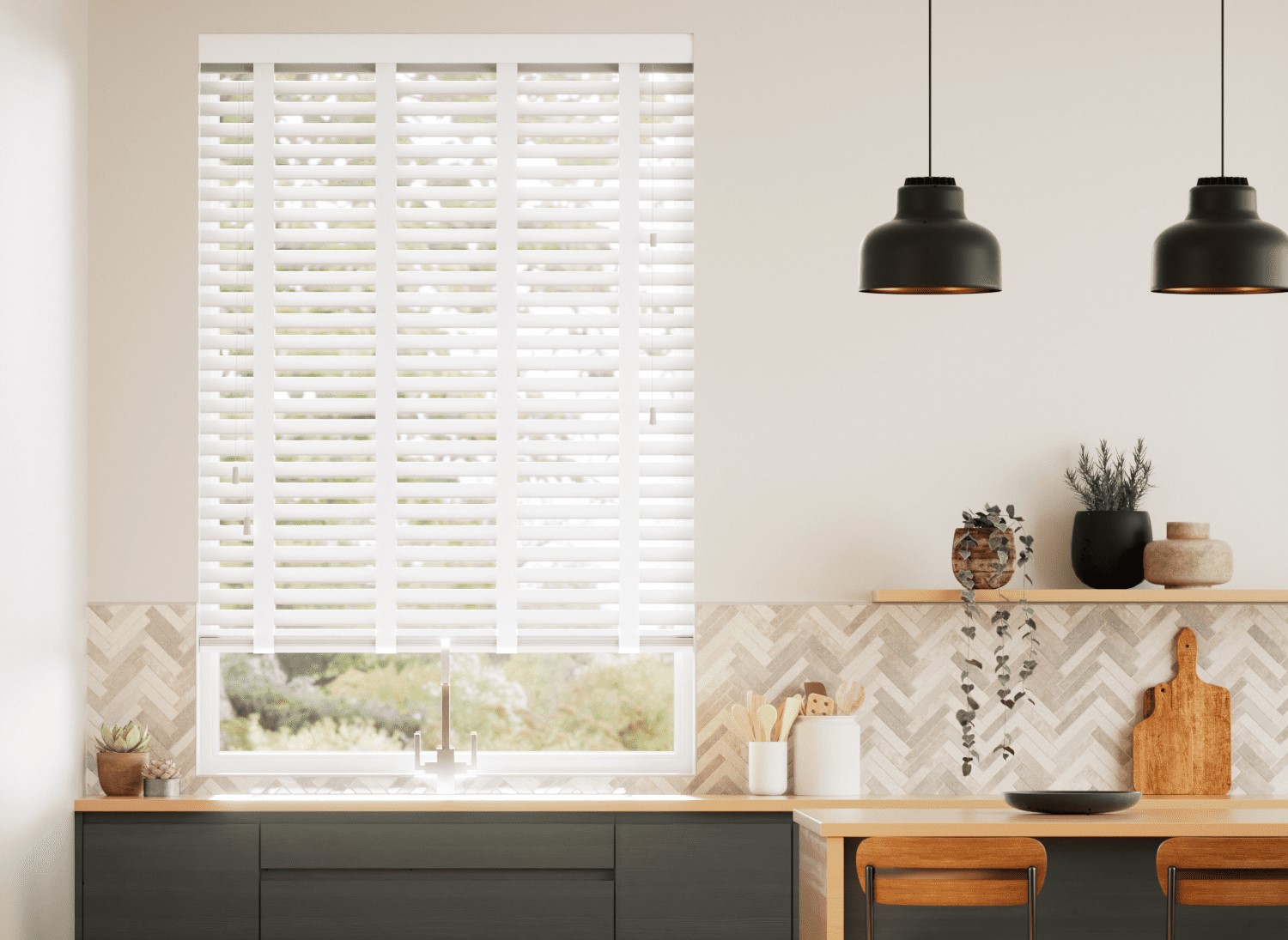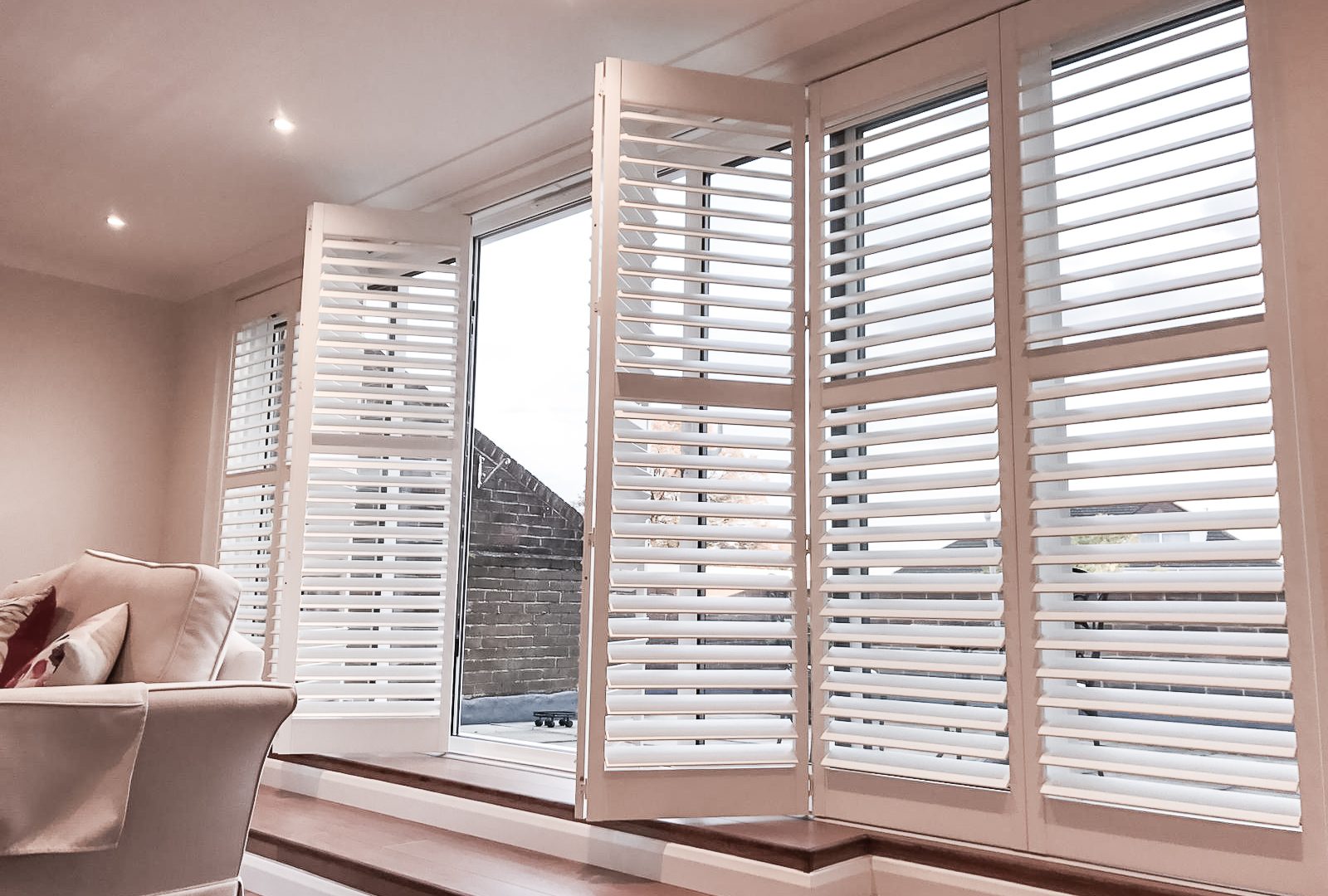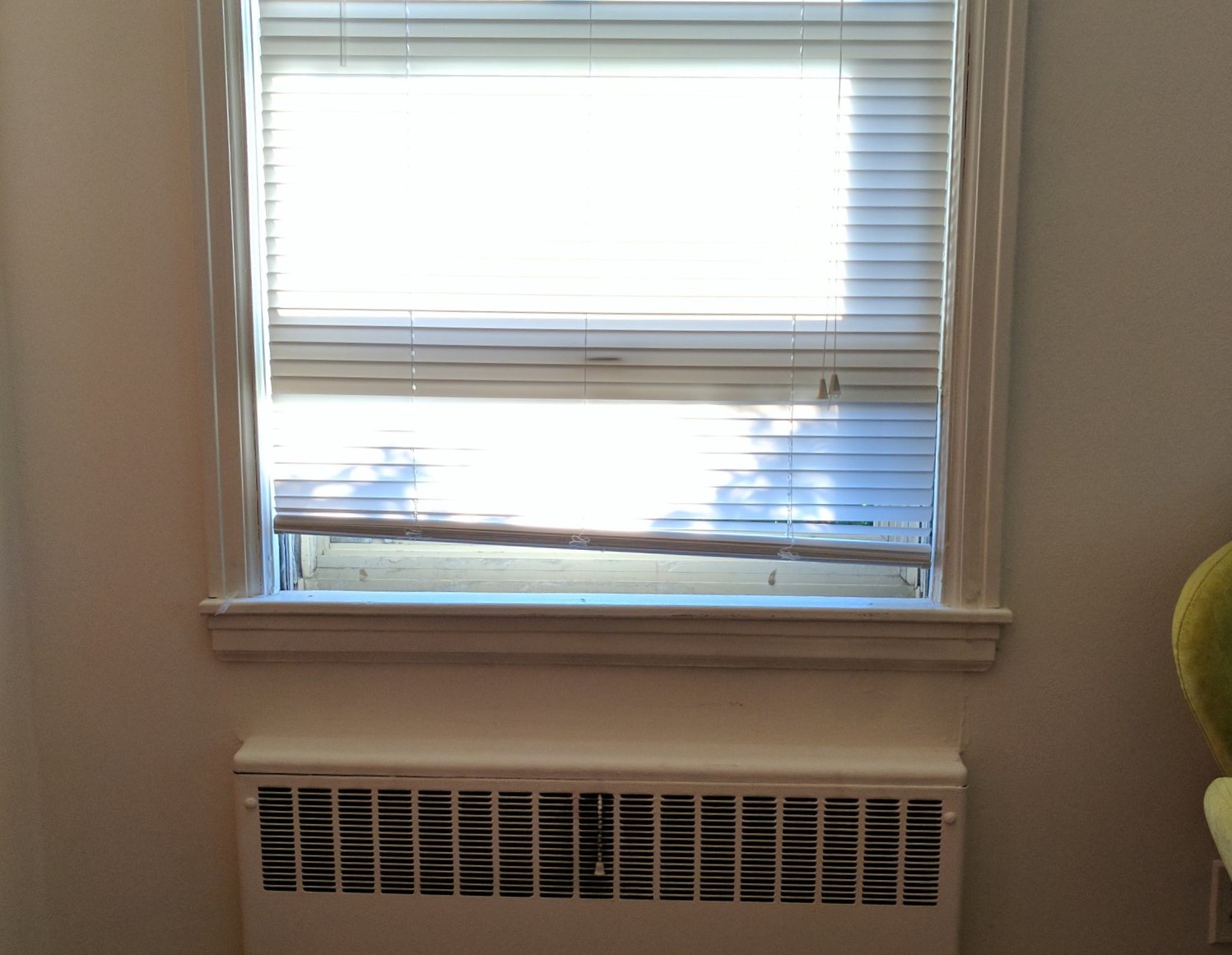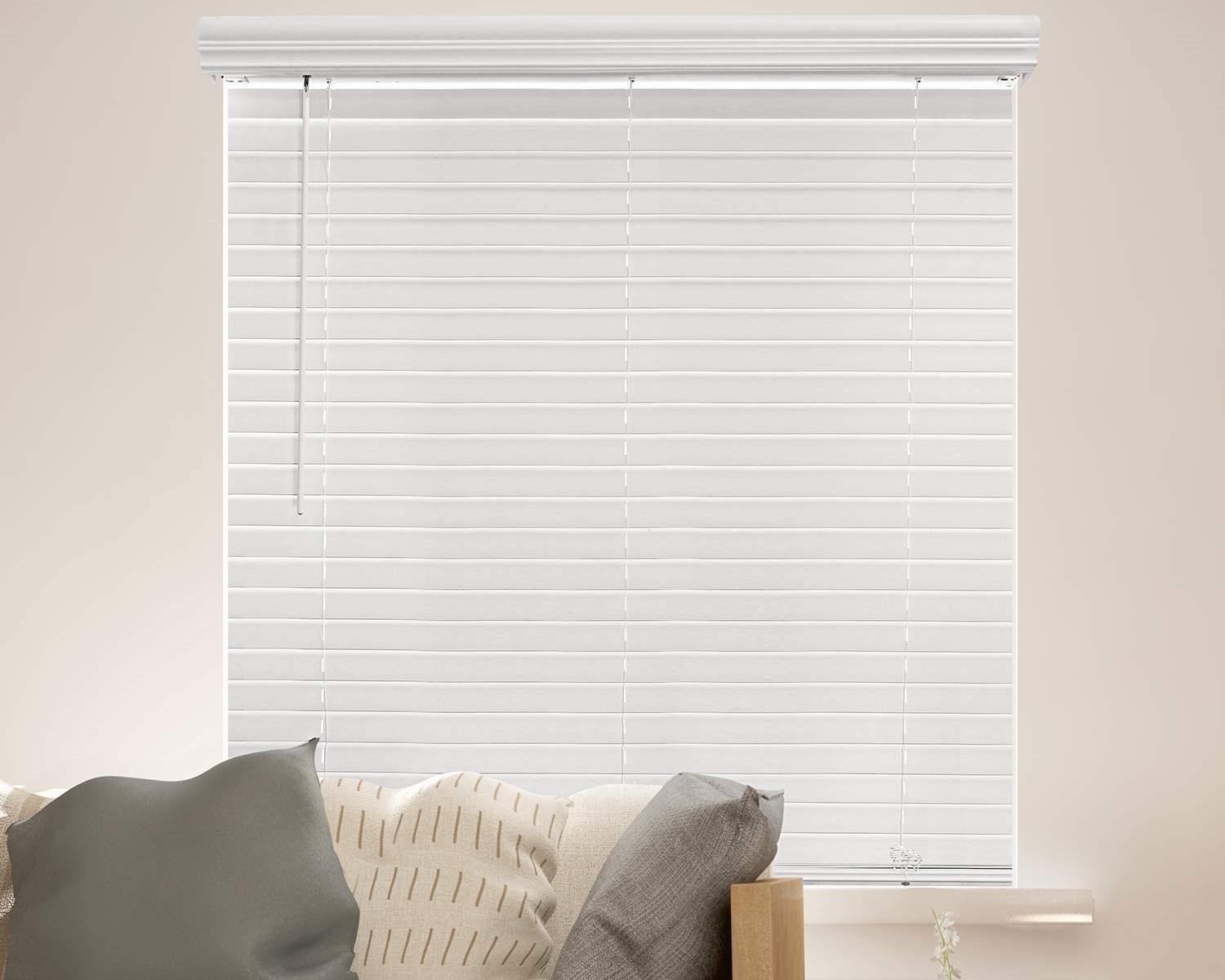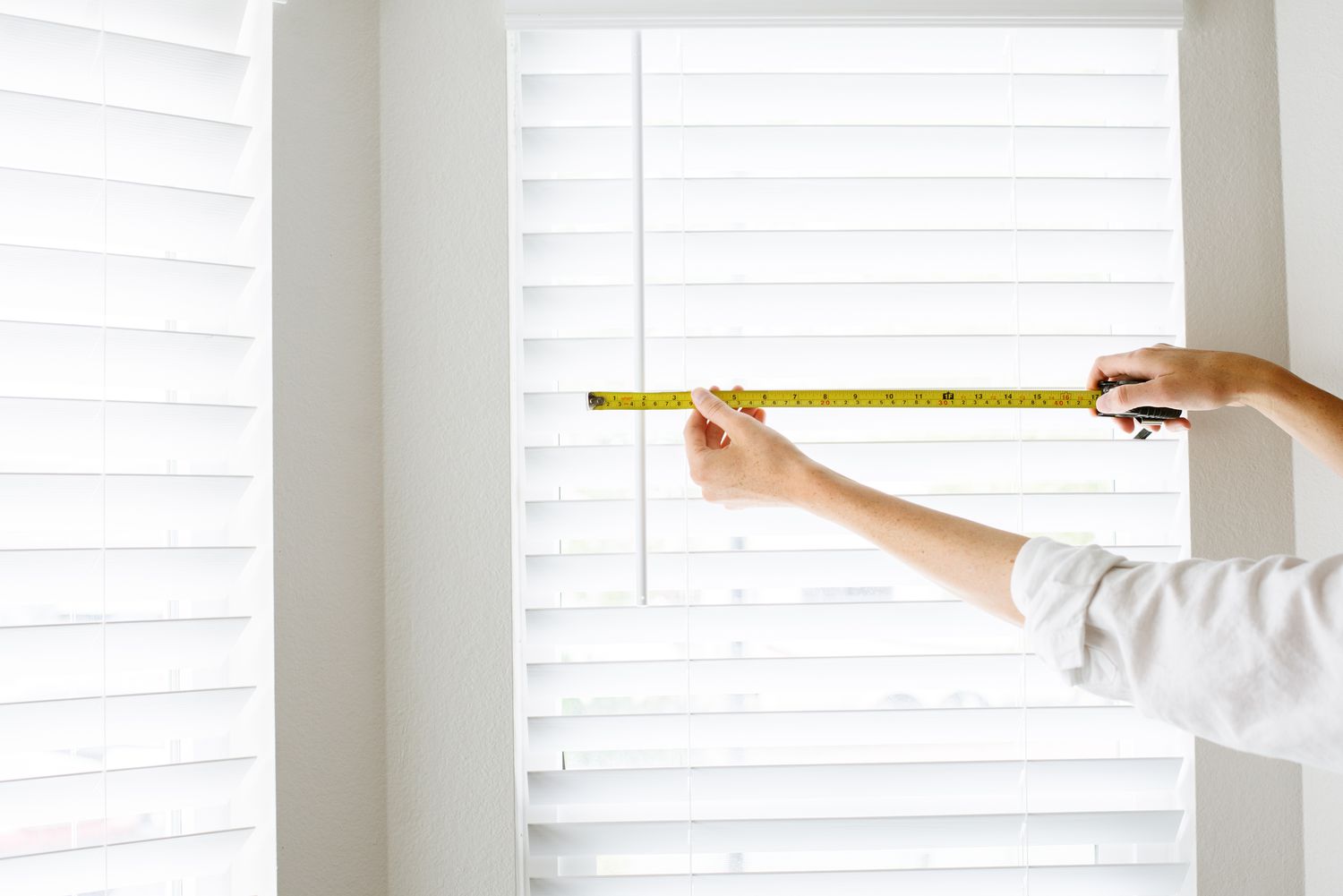

Articles
How To Measure Window Blinds
Modified: January 9, 2024
Learn how to measure window blinds accurately with our informative articles. Find step-by-step guides and tips to ensure a perfect fit for your windows.
(Many of the links in this article redirect to a specific reviewed product. Your purchase of these products through affiliate links helps to generate commission for Storables.com, at no extra cost. Learn more)
Introduction
Window blinds not only add privacy and control the amount of light entering a room but also enhance the overall aesthetic appeal of any space. Whether you’re upgrading your existing blinds or installing new ones, accurate measurement is essential to ensure a perfect fit.
In this article, we’ll guide you through the process of measuring window blinds like a pro. We’ll cover different types of blinds, the tools and materials you’ll need, and step-by-step instructions for measuring inside mount blinds, outside mount blinds, and bay windows. Additionally, we’ll highlight common mistakes to avoid to ensure accurate measurements and a successful blind fitting.
So, whether you’re a homeowner, a renter, or a DIY enthusiast, let’s dive into the world of precision measurement and ensure your window blinds fit perfectly, providing both functionality and style!
Key Takeaways:
- Precision is key when measuring window blinds. Whether it’s inside mount, outside mount, or bay windows, accurate measurements ensure a perfect fit, enhancing both functionality and style.
- Avoid common mistakes like guessing measurements and overlooking obstructions. Double-check your measurements, consider overlap, and ensure a smooth blind fitting process for a stunning visual impact.
Read more: How To Close Window Blinds
Types of Window Blinds
Window blinds come in a variety of styles, each offering unique benefits and functionalities. Understanding the different types will help you choose the one that best suits your needs and complements your interior décor. Here are some popular window blind options:
- Vertical Blinds: These blinds feature vertical slats that can be tilted to control light and privacy. They are commonly used for sliding glass doors and large windows, providing excellent light control and easy operation.
- Horizontal Blinds: Also known as Venetian blinds, these consist of horizontal slats that can be angled to control the amount of light. They are available in a variety of materials, such as aluminum, wood, and faux wood, offering versatility and style.
- Roller Blinds: Made of a single piece of fabric, roller blinds can be rolled up or down to control light and privacy. They are easy to use and come in a wide range of colors and patterns, making them a popular choice for modern interiors.
- Roman Blinds: These blinds are made of fabric that folds into neat horizontal pleats when raised. When lowered, they provide excellent light control and add elegance to any room. Roman blinds are available in various fabrics and patterns to suit different décor styles.
- Pleated Blinds: Similar to Roman blinds, pleated blinds are made of crisp pleated fabric. They are versatile, lightweight, and offer a modern look. Pleated blinds are an excellent choice for conservatories or any room that requires privacy without blocking out too much light.
- Honeycomb Blinds: Also known as cellular shades, these blinds have a unique honeycomb-like structure that traps air, providing excellent insulation. They are energy-efficient and offer superior light control, making them an ideal choice for bedrooms or areas that require privacy.
These are just a few examples, and there are many other styles and variations available in the market. Understanding the different types will help you narrow down your options and choose the blinds that best fit your needs and preferences.
Tools and Materials Needed
Before you start measuring your window blinds, gather the following tools and materials to ensure a smooth and accurate process:
- Tape Measure: A reliable tape measure is crucial for obtaining precise measurements. Opt for a tape measure with both metric and imperial units.
- Pencil and Paper: Use a pencil to mark down your measurements and jot down any notes or special instructions.
- Step Stool or Ladder: If your windows are positioned higher up, a step stool or ladder will come in handy to reach and measure properly.
- Level: A level will help you ensure that your blinds are installed correctly and hang straight.
- Screwdriver: Depending on the type of blind and installation method, you may need a screwdriver to secure brackets or attachments.
- Window Blind Kit: If you’re installing new blinds, make sure you have the necessary hardware included in the blind kit.
It’s important to have these tools and materials readily available before you start measuring your window blinds. This will save you time and ensure a smooth measurement process, allowing you to move forward with confidence when it’s time to install your blinds.
Measuring for Inside Mount Blinds
Inside mount blinds are installed inside the window frame, providing a clean and sleek look. Follow these steps to accurately measure for inside mount blinds:
- Measure the Width: Start by measuring the width at the top, middle, and bottom of the window frame. Take the smallest measurement as the width of your blinds. Make sure to measure inside the frame and not include any trim or molding.
- Measure the Height: Next, measure the height at the left, center, and right of the window frame. Again, take the smallest measurement as the height of your blinds. Exclude any trim or sill when measuring the height.
- Consider Depth: Measure the depth of the window frame to ensure that there is enough space for the blinds to fit without any obstructions.
Keep in mind that when ordering inside mount blinds, you should provide the exact window opening measurement. The manufacturer will make the necessary deductions to ensure a proper fit within the window frame.
It’s important to measure accurately, as inaccuracies can result in ill-fitting blinds that may not operate smoothly or provide effective light control. Double-check your measurements and take your time to ensure precision.
Once you have your measurements, you can confidently order your inside mount blinds and proceed with the installation, knowing that they will fit perfectly and enhance the overall look of your windows.
When measuring window blinds, always use a steel tape measure for accuracy. Measure the width at the top, middle, and bottom of the window, and the length from the top to the bottom.
Measuring for Outside Mount Blinds
Outside mount blinds are installed outside the window frame, creating a statement and adding depth to your windows. Follow these steps to accurately measure for outside mount blinds:
- Measure the Width: Start by measuring the width of the window from one outer edge of the trim or molding to the other. Make sure to include any desired overlap on each side for optimal light control.
- Measure the Height: Next, measure the height from the top of the trim or molding to the desired bottom point for your blinds. Include any additional height for extra privacy or to cover specific areas of the window.
- Add Additional Measurements: If you have an uneven or non-standard window shape, such as an arch, bay window, or angled top, measure any additional dimensions required to cover the entire window area.
When measuring for outside mount blinds, it’s important to leave sufficient space on all sides of the window to ensure proper coverage and a polished appearance. It’s recommended to add at least 2 to 3 inches on each side and 3 to 4 inches above the window frame. These additional measurements will provide optimal light blockage and privacy when the blinds are fully closed.
Take your time and double-check your measurements to ensure accuracy. Remember that outside mount blinds are custom-made based on the measurements you provide, so it’s crucial to be precise.
Once you have your measurements, you can confidently order your outside mount blinds and proceed with the installation, knowing that they will fit perfectly and create a stunning visual impact in your space.
Read more: What Is Window Blinds
Measuring for Bay Windows
Bay windows add charm and character to any room, but measuring for blinds in these unique window structures can be a bit more complex. Follow these steps to accurately measure for bay windows:
- Individual Window Measurements: Start by measuring each individual window within the bay. Measure the width and height of each window, following the instructions for either inside or outside mount blinds.
- Consider the Angles: Measure the angles between the windows to determine the required size and shape of the blinds. Use a protractor or angle measuring tool to accurately measure the angles.
- Determine Overlap: Decide on the desired overlap between the blinds on each window. It’s recommended to have at least a 2-inch overlap for inside mount blinds and a larger overlap for outside mount blinds to ensure optimal light control and privacy.
- Consider Center Window Treatment: Bay windows often have a larger center window that requires special attention. Measure the width and height of the center window separately and decide if you want to treat it differently than the other windows, such as with a different style or size of blinds.
When measuring for bay windows, it’s important to take accurate measurements of each individual window to ensure a proper fit and an aesthetically pleasing appearance. Considering the angles and overlap will help you determine the correct sizing and positioning of the blinds.
Once you have all the measurements, you can confidently order your blinds and proceed with the installation, knowing that they will fit perfectly and enhance the beauty of your bay windows.
Common Mistakes to Avoid
When measuring for window blinds, it’s important to avoid common mistakes that can lead to ill-fitting blinds and unnecessary frustration. Here are some common mistakes to avoid:
- Guessing Measurements: Never guess the measurements of your windows. Always use a tape measure and take accurate measurements following the instructions for inside or outside mount blinds.
- Forgetting to Account for Obstructions: Make sure to consider any obstructions, such as window handles, locks, or vents, that might interfere with the proper installation or operation of the blinds. Measure and note down any obstructions to ensure a suitable fit.
- Overlooking Trim or Molding: When measuring for inside mount blinds, be sure to measure inside the window frame and exclude any trim or molding. For outside mount blinds, account for the width and height of the trim or molding in your measurements.
- Not Double-Checking Measurements: Accuracy is key when measuring for blinds. Always double-check your measurements to ensure precision and avoid any costly mistakes.
- Ignoring Additional Dimensions: If you have unique window shapes, such as bay windows or angled tops, don’t forget to measure any additional dimensions required to cover the entire window area. Ignoring these additional measurements can lead to blinds that don’t fit properly.
- Not Considering Overlap: Whether for inside or outside mount blinds, it’s important to consider the desired overlap for proper light control and privacy. Neglecting to account for the necessary overlap can result in blinds that don’t provide the desired functionality.
By avoiding these common mistakes, you can ensure accurate measurements and a successful blind fitting process. Take your time, follow the instructions, and double-check your measurements to achieve the best results.
Conclusion
Measuring window blinds may seem like a simple task, but it requires attention to detail and precision to achieve the perfect fit. Whether you’re installing inside mount blinds, outside mount blinds, or dealing with bay windows, following the correct measurement process is essential.
By understanding the different types of window blinds and the tools and materials needed, you can approach the measurement process with confidence. Taking accurate measurements and avoiding common mistakes will ensure that your blinds fit seamlessly, providing both functionality and visual appeal.
Remember to double-check your measurements, consider any obstructions or additional dimensions, and factor in the desired overlap for optimal light control and privacy. By doing so, you can avoid unnecessary headaches and ensure a successful blind installation.
So, whether you’re upgrading your existing blinds or embarking on a new home improvement project, take the time to measure your window blinds accurately. With the right measurements in hand, you can confidently select and order blinds that will transform your windows and elevate the overall ambiance of your space.
Now that you have the knowledge and guidance to measure window blinds like a pro, it’s time to take the measurements and enjoy the benefits of perfectly fitted blinds that enhance both the functionality and aesthetics of your home!
Frequently Asked Questions about How To Measure Window Blinds
Was this page helpful?
At Storables.com, we guarantee accurate and reliable information. Our content, validated by Expert Board Contributors, is crafted following stringent Editorial Policies. We're committed to providing you with well-researched, expert-backed insights for all your informational needs.

